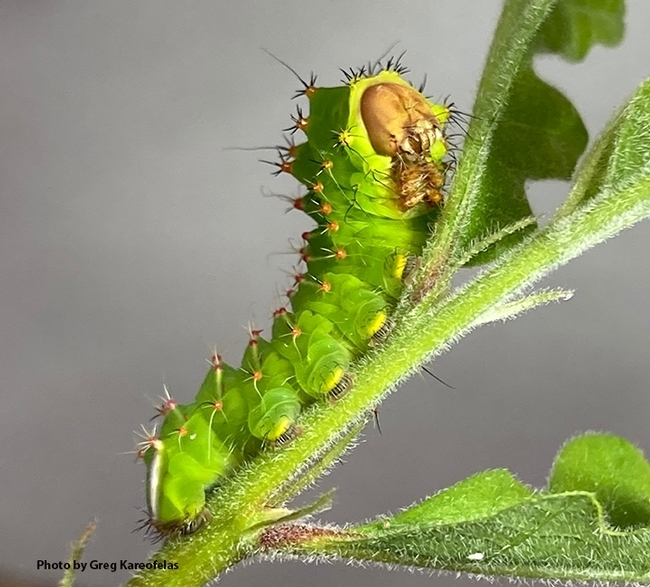
Those attending the Bohart Museum of Entomology's recent Moth Night learned all about silkworms, moths, cocoons and textiles at a display staffed by Michael "Mike" Pitcairn, a retired senior environmental scientist/supervisor with the California Department of Food and Agriculture.
Mulberry silk production originated in China at least 5000 years ago. Folklore indicates that the wife of a Chinese emperor watched a cocoon fall from a mulberry tree into her teacup. She reportedly watched the cocoon unravel, revealing a long delicate thread. She collected thousands of the threads and made a robe for the emperor.
Biology Professor Richard Peigler of University of the Incarnate Word, San Antonio, donated the items to the Bohart Museum in 2020, said UC Davis Distinguished Professor Emerita Lynn Kimsey, former director of the Bohart. "What's cool about it is," she said, "is that the silk pieces were made from silk produced by multiple silk moth species, not just the one we think of commercially."
The mulberry moth is the primary producer of silk. Tussah is the most well known of the wild silks.
Peigler has worked extensively with wild silk moths, studying their phylogeny, taxonomy and biology. His donations comprise the Wild Silks collection at the McGuire Center for Lepidoptera and Biodiversity, Florida Museum of Natural History, University of Florida.
"Wild silk is not nearly as luxurious as domestic silk found in today's clothing industry," the McGuire Center website relates. "This is raw, rough, and textured silk which feels almost paper-like to the human touch. This silk is harvested from the cocoons of various silk moths that encounter little to no human interaction. The practice of producing silk – termed sericulture, stretches back 5 millennia, and astonishingly, is a craft performed to this very day."
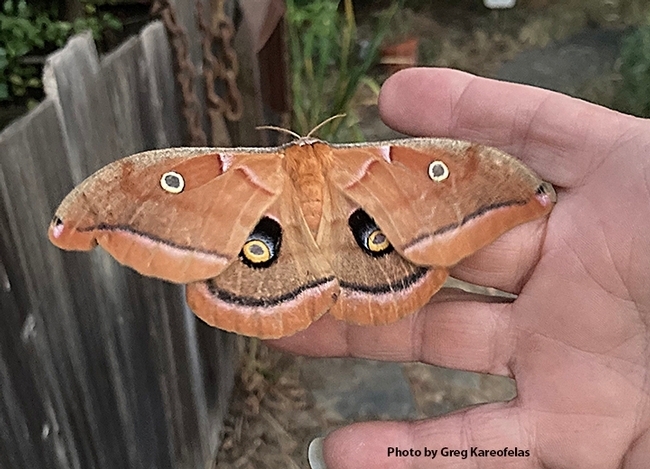
They included a woman's chaddar (head covering and shawl) and tablecloths.
Eri Silk (Samia ricini). Displayed was a woman's chaddar of 100 percent eri silk (Samia ricini), handwoven in Assam, India, and of naturally colored yarn. The brocade was done in traditional Assamese motifs. Women in rural villages in Northeast India wear these traditional shawls in winter. Peigler bought the chaddar for $47 from a seller in India in 2019.
Tussah Silk (Antheraea pernyi). Displayed was an antique tablecloth of tussah silk, handwoven in China in the 1920s or 1930s. The tablecloth, hand-reeled and in the natural beige color, is hand-embroidered with mulberry silk (Bombx mori). China has exported thousands of tablecloths and handkerchiefs made of tussah silk (called "pongee" or "Shantng silk") to the United States and the United Kingdom. Peigler purchased this tablecloth in April 2019 from an internet seller in Mount Dora, Fla., for $35.
Also of interest was a sample of tussah silk fabric in a pattern called "Honeycomb," mimicking the hexagonal cells in a bee colony. "The yarns were machine spun and the fabric was machine woven," said Peigler, who purchased the fabric from Oriental Silk Import Co. in Los Angeles for $32.95 per yard. There are several species of tussah silk moths (family Saturniidae) in China, India, Japan, Africa and North America.
Mulberry Silk (Bombx mori). Displayed was a tablecloth created in the early 1900s in China. "It was spun, woven and embroidered by hand," Peigler related.
The Bohart Museum, founded in 1946, is located in Room 1124 of the Academic Surge Building, 455 Crocker Lane, UC Davis campus. It also includes a live petting zoo and an insect-themed gift shop. Director of the museum is Professor Jason Bond, the Evert and Marion Schlinger Endowed Chair of UC Davis Department of Entomology and Nematology, and associate dean, Agricultural Sciences, UC Davis College of Agricultural and Environmental Sciences.
The Bohart Museum is open to walk-in visitors on Tuesdays from 9 a.m. to noon and from 1 to 4:30 p.m. through Aug. 27. It will be closed to the public Sept. 1-22.
The next open house is set for 1 to 4 p.m., Saturday, Sept. 28. The theme is "Museum ABC's: Arthropods, Bohart and Collecting." All open houses are free and family friendly. Parking is also free. For more information, contact bmuseum@ucdavis.edu or access the website at https://bohart.ucdavis.edu.
Attached Images:
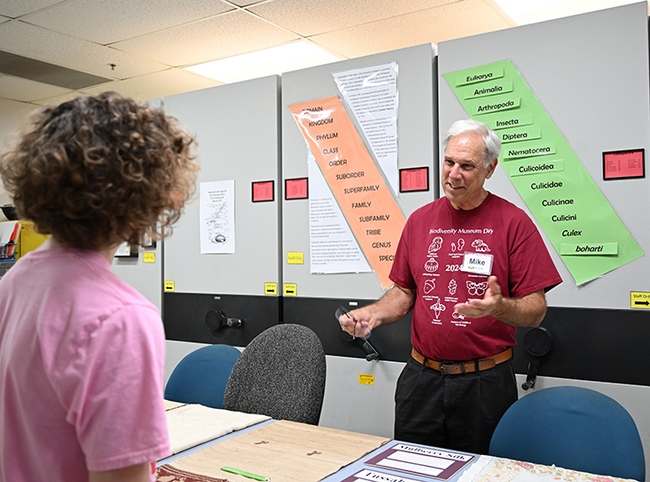
Bohart Museum associate Michael Pitcairn, retired from the California Department of Food and Agriculture, answers questions about silkworm moths and textiles. (Photo by Kathy Keatley Garvey)
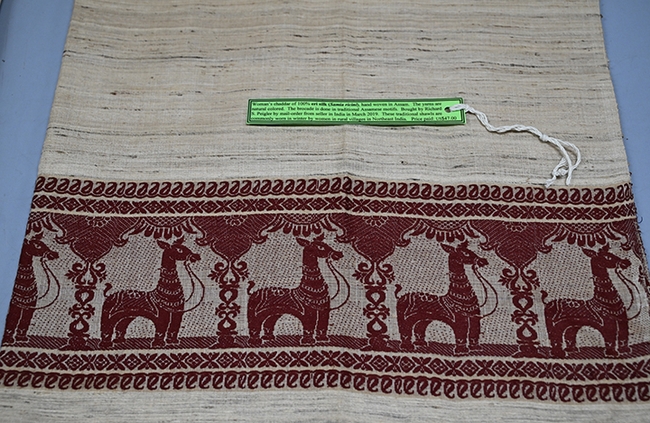
This chaddar is made of rri silk (silkworm moth, Samia ricini) and handwoven in Assam, India. (Photo by Kathy Keatley Garvey)
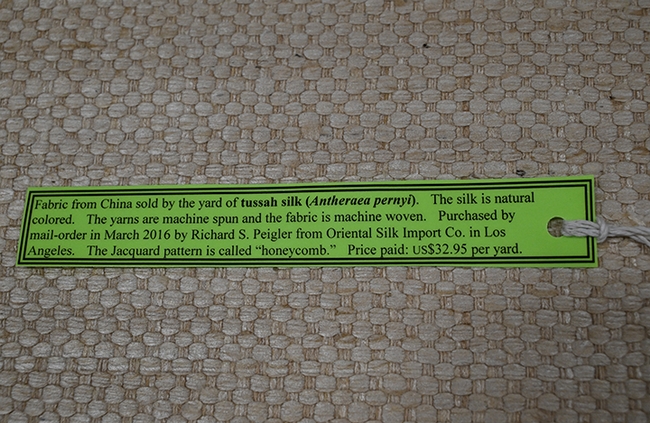
This is tussah silk fabric in a pattern called "Honeycomb." Donor Richard Pleiger purchased this fabric from a Los Angeles company for $32.95 per yard. There are several species of tussah silk moths (family Saturniidae) in China, India, Japan, Africa and North America.(Photo by Kathy Keatley Garvey)